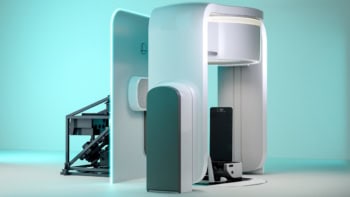Researchers at Bristol University in the UK have developed a new scanning near-field optical microscope that is over 1000 times faster than previous instruments and about ten times faster than any other scanning probe microscope. The new microscope can reach scan speeds of 150 millimetres per second and can image an area of 20 microns squared in less than 10 milliseconds (A Humphris et al. 2003 Appl. Phys. Lett. 83 6).
Scanning probe microscopes can produce three-dimensional images with molecular resolution, and can also be used to follow processes, such as polymer crystallization. However, they are very slow because the image must be collected one pixel at a time, line by line.
In a scanning probe microscope the force between a mechanical probe and a surface is measured as the probe is moved or scanned across the surface. The probe oscillates but does not actually touch the surface, and the force is measured by monitoring the deflection of the optical microcantilever on which the probe is mounted. The rate at which an image can be acquired depends on two factors: the intensity of the optical signal from the probe and the way that the probe mechanically moves across the sample.
Andy Humphris, Jamie Hobbs and Mervyn Miles increased the amplitude of the probe oscillations from a few nanometres to several micrometres, which allowed data to be collected continuously rather than at individual points. Moreover, the probe was made to oscillate at its resonant frequency, which allowed thousands of lines to be scanned in a second. The team enhanced the intensity of the optical signal from the probe by reflecting a laser beam off the underside of the sample to ensure that it could still be detected at the larger oscillation distances.
To test their microscope, the researchers compared an image of a polymer thin film taken in a relatively short time – about 8 milliseconds – with a conventional image that had been produced in about 20 minutes. They found that the resolution and the quality of the two were very similar. The team says that the instrument could be used in nanotechnology and biotechnology for imaging at video rate speeds and beyond.



